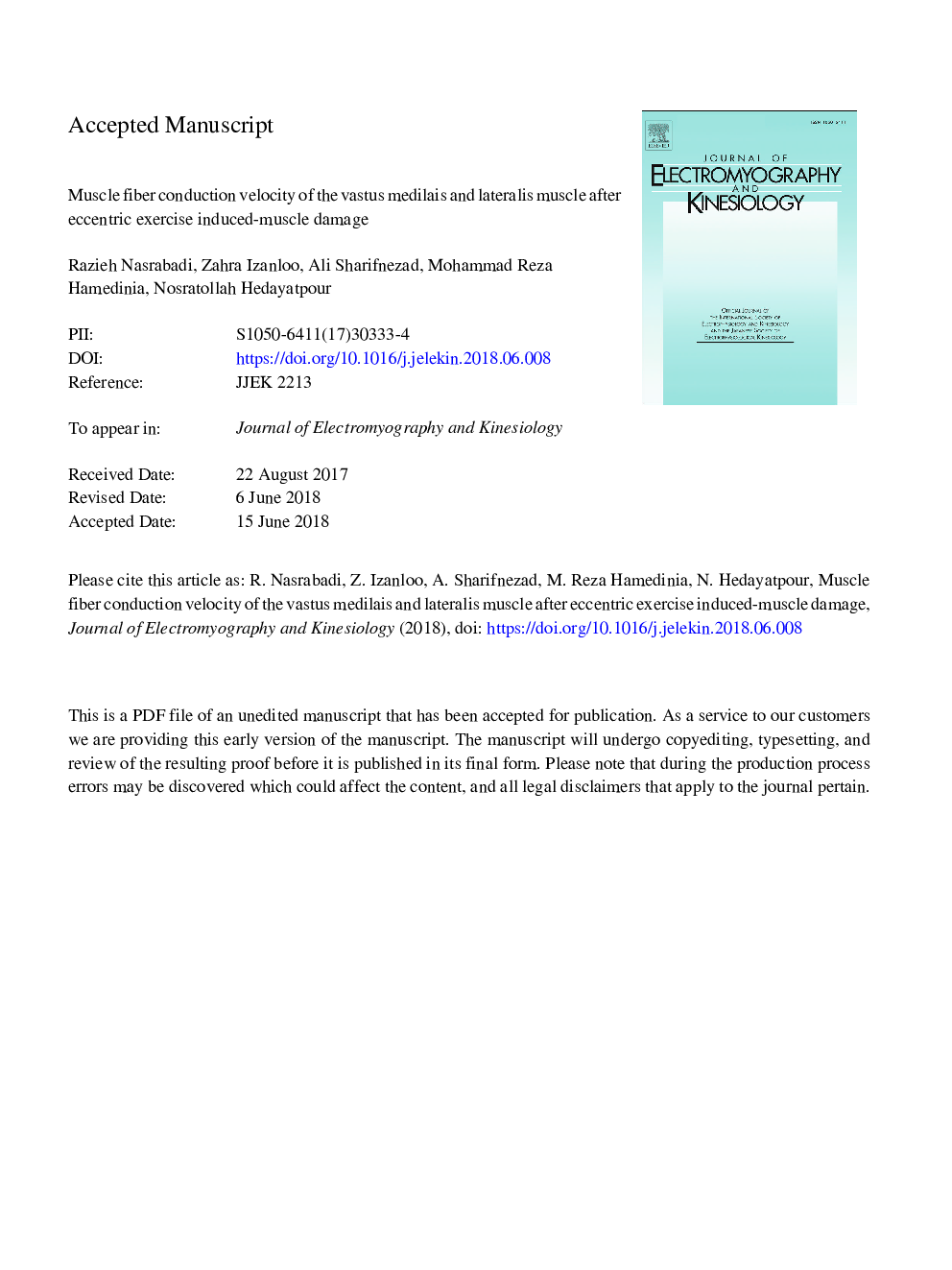| Article ID | Journal | Published Year | Pages | File Type |
|---|---|---|---|---|
| 11032684 | Journal of Electromyography and Kinesiology | 2018 | 35 Pages |
Abstract
Change in muscle fiber conduction velocity (MFCV) has been reported after eccentric exercise induces muscle fiber damage, most likely due to a change in membrane permeability of the injured fiber. The extent of damage to the muscle fiber depends on the morphological and architectural characteristics of the muscle fibers. Morphological and architectural characteristics of the VMO muscle fibers are different from VL muscle. Thus, it is expected that eccentric exercise of quadriceps muscle results in a non-uniform fiber damage within the VMO and VL muscle and, as a consequence, non-uniform changes in membrane excitability and conduction velocity. The aim of the study was to investigate MFCV of the VMO and VL muscles before and 24â¯h after eccentric exercise. Multichannel surface EMG signals were concurrently recorded from the right VMO and VL muscles of 15 healthy men during sustained isometric contractions at 50% of the maximal force. Maximal voluntary force significantly reduced after eccentric exercise with respect to the pre-exercise condition (Pâ¯<â¯0.0001). MFCV decreased over time during the sustained contractions at faster rates when assessed 24â¯h after exercise (VMOâ¯=â¯â26.1; VLâ¯=â¯â20.1) with respect to the pre-exercise condition (VMOâ¯=â¯â9.1; VLâ¯=â¯â13.7, Pâ¯<â¯0.0001). Moreover, VMO showed a greater rate of reduction in MFCV over sustained contraction (26.1â¯Â±â¯10.7%) in comparison with VL muscle (20.1â¯Â±â¯8.5%, Pâ¯<â¯0.025) 24â¯h after eccentric exercise. The result indicates that eccentric exercise contributes to a larger reduction in MFCV within the VMO muscle as compared to the VL muscle. This may abolish the ability of VMO to counteract the lateral pull of the VL muscle during knee extension, thereby leaving the knee complex more vulnerable to injury.
Related Topics
Health Sciences
Medicine and Dentistry
Orthopedics, Sports Medicine and Rehabilitation
Authors
Razieh Nasrabadi, Zahra Izanloo, Ali Sharifnezad, Mohammad Reza Hamedinia, Nosratollah Hedayatpour,
